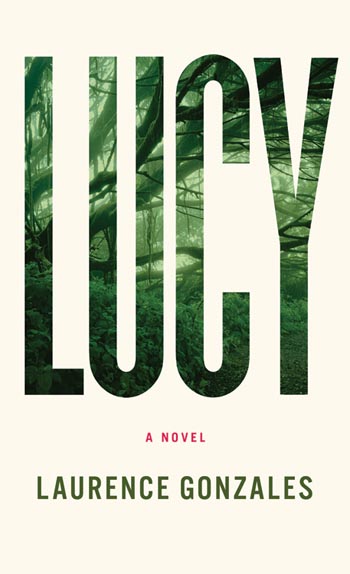Book Bag: Haitian Slaves, Hybrid Humans, and the Juxtaposition of Racism
Reviews by Sharon L. Shervington
 Island Beneath the Sea
Island Beneath the Sea
Written by Isabel Allende
Her storied life, the childhood travels with her diplomat parents both before and after things fell apart in Chile (after the president, a close relative, was assassinated), are part of the mystique of this international icon of literature and deeply compassionate writer. But it may well have been the devastating loss of her daughter from an illness when she was just 28 years old that lurks behind this story of families torn apart—especially mothers whose children are lost to them, as has so often happened when people are enslaved.
The story concerns Zarite, a half-European, half-African girl who was
enslaved by Toulouse Valmorain, a Frenchman, in what is now Haiti. He
has been molesting her since childhood. She becomes his wife’s maid, and
even after that convent-reared woman goes crazy and dies, the lives of
Zarite and Toulouse remain intertwined.
There are many fascinating characters, but it is the setting in
Saint-Domingue that firmly anchors this story in place and in time. That
time is not long before the revolution against slavery led by Toussaint
L’Ouverture in the 18th century, a story that has been told and
explored from many angles. The book includes fascinating portrayals of
L’Ouverture and his deputies as well.
It depicts clearly the factors that led to this well-known
historical bloodbath. Tens of thousands of slaves (the exact number can
never be known) were worked to death in the brutal conditions of the
sugar cane fields so that Europe could have its sweet tea and rum. Many
who survived the labor were tortured to death by cruel overseers and
masters. Ms. Allende also looks hard at questions of race, such as the
dozens of names—aside from the pervasive mulatto and quadroon
classifications—that obsessed society and conferred status or its lack.
But the center of the book is Zarite’s pain at having her son
taken from her by Valmorain at his birth and never knowing where he was.
She also has two other children, her daughter Rosette, by Valmorain,
whom Zarite cannot protect when the family moves to New Orleans, and
Valmorain’s son by his wife, whom Zarite raises and loves as if he were
her own son. That love is returned by the son, Maurice, just as
fiercely.
It is many kinds of love, and hate, that bring the novel to a
satisfying, if tragic, conclusion, that focuses on the little-known
system of placage whereby wealthy New Orleanians took mixed-race women
as unofficial second wives, often having large families with them,
sometimes sending their children to Europe to be educated.
The style here is not the surreal magic realism that Ms. Allende has
been known for, but rather a darker magic that has succored the world
over since time out of mind. In her own way she forges a new path in
literature, telling the stories of women, and men, who otherwise would
have been forgotten.
Island Beneath the Sea; By Isabel Allende; Harper; 457 pages; $26.99
 Lucy
Lucy
Written by Laurence Gonzales
Caught in the jungles of Congo as insurgents attack, Jenny, a
primatologist, finds her longtime competitor dead and manages to spirit
his teenage daughter out of the country and into America with a little
help from her friends. Soon enough she learns that the girl, Lucy, who
looks entirely human and speaks several languages, is a hybrid:
half-human, half-bonobo.
With some reservations, she adopts the girl, who has won her heart,
and despite their best intentions the secret comes out. This sends
religious fundamentalists, wealthy corporate interests, and the media
into frenzied action. By then, however, Lucy is much like every other
American teenager, with her dexterous use of social websites,
involvement in high-school sports, and a love-hate relationship with
school. It is the absurdities of our culture such as the conspicuous
consumption of malls, the waste, and the noise, that Lucy can’t stand.
But when evil forces attempt to kidnap the girl, and possibly her
best friend, to experiment on her and to torture her, it is her animal
nature that just may save her. This is not only a scientific thriller
and adventure novel, but also a philosophical exploration of what it
means to be human and the ways in which the meaning of family—but never
the need for it—changes with the times.
Lucy; By Laurence Gonzales; Knopf; $24.95; 307 pages
 Telling Times; Writing and Living, 1954-2008
Telling Times; Writing and Living, 1954-2008
Written by Nadine Gordimer
In the best writing, writers use one culture to illuminate universal
truths and, sometimes the truth of a reader’s own, different, culture.
In this comprehensive collection of Nadine Gordimer’s nonfiction, such
insight is woven throughout the book. Looked at from a 21st-century
remove the parallels between the legal monster of apartheid in South
Africa and the realities of the American legal system vis à vis racism
are inescapable.
The collection is divided by decade and burnishes Ms. Gordimer’s
already blazing international reputation. Beginning with her well-known
piece “A South African Childhood,” we are treated to much material on
the author’s own life, and that is juxtaposed with pieces on icons such
as Nelson Mandela, Desmond Tutu, Salman Rushdie and Octavio Paz, to
others perhaps less well known to Americans, such as Breyten Breytenbach
and activist clergyman Trevor Huddleston.
“Letter from Soweto,” “What Being South African Means to Me,” and
“Letter from Johannesburg bring together a unique blend of edge-of-the
seat history, and including the influence of our own country through
officials like Henry Kissinger and Andrew Young, in the ugly, vicious,
and protracted violence but also the resistance and struggle that came
to a climax with the release of Nelson Mandela from prison.
In the 2000s there are pieces on many literary giants from
Hemingway to Tolstoy to Chinua Achebe, Phillip Roth, and many more. At
one point in the book Ms. Gordimer states that in South Africa, race
essentially trumped gender as the problem. That may be part of the
reason why the great women writers are not given quite as much space
here as these exemplars of the male canon. But overall, this is a
fantastic and comprehensive look at one of the world’s great writers.
Telling Times; Writing and Living, 1954-2008. By Nadine Gordimer; Norton; 742 pages; $39.95
 Sugar: a Bittersweet History
Sugar: a Bittersweet History
Written by Elizabeth Abbott
This gritty and gripping look at sugar could well have been a source
for Island Beneath the Sea. But its true greatness lies in its
presentation of the big picture.
That,unfortunately, still is not
being taught in schools or in the history books and illustrates a
direct link between now and then. For example: “The sugar lobby was an
integral part of the system, promoting protectionism through
sugar-favoring tariffs and by persuading legislators to provide sugar
and rum to the inmates of poorhouses and to sailors in the Royal Navy.”
The final chapter surveys the state of sugar today, with a
still-powerful sugar lobby essentially promoting obesity around the
world. Throughout this important book, Ms. Abbott never lets readers
forget the centrality of economics, not racism, to slavery. In fact
racism was created as the prime justification for slavery. Still, Ms.
Abbott clearly sees both the enslaved and the slavers as individuals in a
corrupt and gross system.
Sugar: a Bittersweet History; By Elizabeth Abbott; Duckworth Overlook; $29.95; 453 pages






